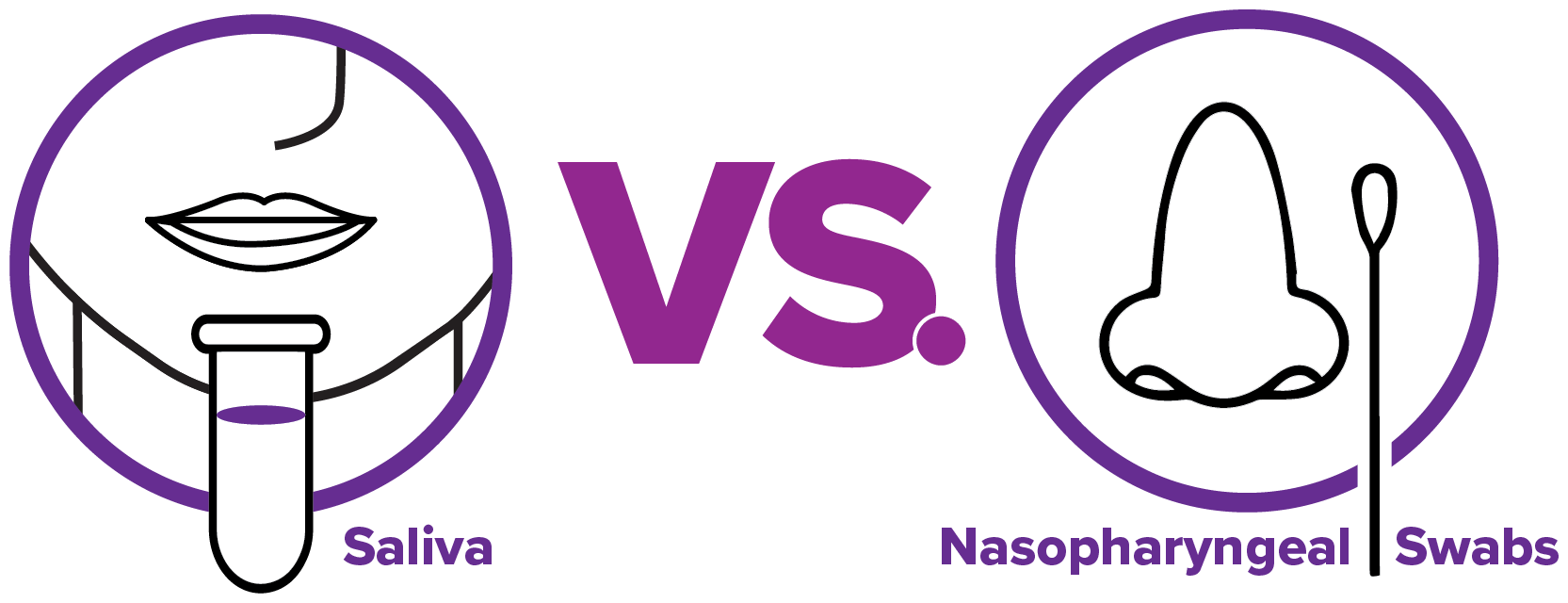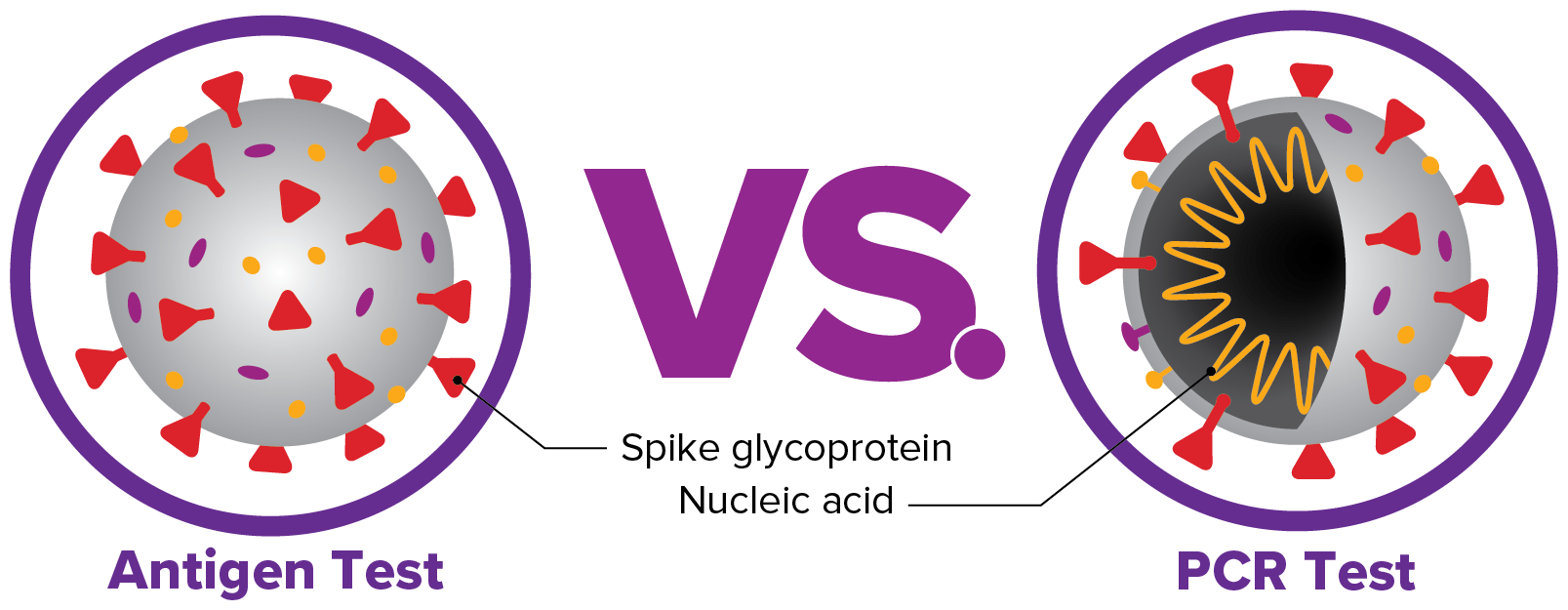Saliva-Based Testing of Communities for COVID-19
Connecting You With Testing Services You Need
With the coronavirus pandemic continuing unabated, several companies have developed diagnostic tests to detect SARS-CoV-2, the virus that causes COVID-19. Since this is a novel coronavirus, testing approaches are changing as we learn more about the infection. To find out if you are infected, there are two kinds of diagnostic tests: molecular tests such as PCR tests that detect genetic material from the coronavirus, and antigen tests that detect specific proteins from the virus.
Fluidigm has developed a diagnostic molecular test to detect SARS-CoV-2 in saliva for use under FDA Emergency Use Authorization (EUA)
The Fluidigm PCR test for COVID-19 in saliva is an accurate and reliable test with several significant advantages. The test is:
- Extraction-free: No need for an extraction kit to isolate viral genetic material from each specimen before running the test.
- High-throughput: Staggered runs generate 192 results every 35 minutes* following completion of the first run.
- Scalable: Modular platform supports staging of concurrent runs to achieve up to 6,000* samples and controls per day per instrument.
- Noninvasive: Saliva collection is convenient, stress-free and pain-free.

Advantages of saliva as a test specimen vs. nasopharyngeal swabs (NPS)
The Fluidigm PCR test offers a number of compelling advantages because it is saliva-based. The Fluidigm test:
- Is noninvasive
- May represent a better sample type for mass disease-screening programs
- Is faster and more economical than nasopharyngeal sampling
- Is unaffected by supply chain impacts on the availability of extraction kits as well as swabs and PPE required for health care personnel collecting nasopharyngeal samples
Saliva is an excellent matrix for COVID testing
NPS are used for respiratory disease diagnosis, including COVID-19. However, key challenges related to using NPS, such as patient discomfort and supply chain constraints for swabs and extraction kits, have led multiple researchers to investigate the use of saliva as a matrix.
Recent studies demonstrate that the detection rates and viral load levels of SARS-CoV-2 virus in saliva are, at minimum, comparable to those obtained with nasopharyngeal swabs (NPS). When compared to NPS tests, in multiple1,2,3,4,5 scientific studies, saliva demonstrates higher coronavirus detection rates than NPS. Saliva also performs well compared to nasal swabs, where respiratory samples are collected from the nasal walls. In multiple clinical comparisons2,4,5, saliva specimens had higher detection rates than nasal swabs.
Advantages of an extraction-free PCR test
The Fluidigm COVID-19 diagnostic test uses an extraction-free workflow that confers multiple benefits:
- Collection is performed using a sterile tube with no preservatives—a significantly less costly and more accessible option than other collection devices.
- The elimination of an extraction step mitigates supply chain constraints and makes the test more economical.
- The test requires less than 100 µL of saliva, reducing sample rejection rates.
- The test kit is manufactured and distributed under the Fluidigm quality system, which also offers dedicated customer support.

PCR test vs. a rapid antigen test
Antigen tests, though rapid, detect only small pieces of the virus and cannot make more copies of the targets they are designed to detect. Sensitivity is therefore limited by the original amount of target material present within the sample. By comparison, the PCR process targets one or more viral genome segments that can be readily amplified to boost sensitivity. For this reason, molecular PCR testing methods statistically outperform antigen testing on sensitivity6 and the CDC calls the molecular test the gold standard for clinical diagnostic detection of SARS-CoV-2.
As antigen tests are less sensitive than most PCR-based tests, such as the Fluidigm PCR test, they have a higher false-negative rate. For this reason, according to FDA guidance, if you test negative with an antigen test, a molecular test may be prescribed by your health care provider to confirm the result.
Learn more about COVID-19 Community Connect: go.fluidigm.com/community-connect
* Actual results may vary based upon the following factors, including but not limited to laboratory processes, workflows, equipment and the number of operators.
References:
- Wyllie, A.L., Fournier J., Casanovas-Massana, A. et al. “Saliva or nasopharyngeal swab specimens for detection of SARS-CoV-2.” New England Journal of Medicine (2020): 1,283–6.
- Hanson, K.E., Barker, A.P., Hillyard, D.R. N. et al. “Self-collected anterior nasal and saliva specimens versus health care worker-collected nasopharyngeal swabs for the molecular detection of SARS-CoV-2.” Journal of Clinical Microbiology (2020): e01824-20.
- Rao M., Rashid F.A., Sabri F.S.A.H. et al. “Comparing nasopharyngeal swab and early morning saliva for the identification of SARS-CoV-2.” Clinical Infectious Diseases (2020): ciaa1156.
- Teo, A.K.J., Choudhury, Y., Tan, L.B. et al. “Validation of Saliva and Self-Administered Nasal Swabs for COVID-19 Testing.” MedRxiv (2020): doi:2020.08.13.20173807.
- Kojima, N., Turner, F., Slepnev, V. et al. “Self-collected oral fluid and nasal swabs demonstrate comparable sensitivity to clinician collected nasopharyngeal swabs for Covid-19 detection.” MedRxiv (2020): doi:2020.04.11.20062372.
- Scohy, A., Anantharajah, A., Bodeus, M. et al. “Low performance of rapid antigen detection test as frontline testing for COVID-19 diagnosis.” Journal of Clinical Virology (2020): 104455.
Want More?
Sign up for the GSS Resources Newsletter, an eNewsletter that delivers new technology and news, straight to your inbox.
GSS-Sales@govsci.com | 800.248-8030 | govsci.com

ISO 9001:2015 Certified
Copyright 2020, Government Scientific Source. All Rights Reserved.







